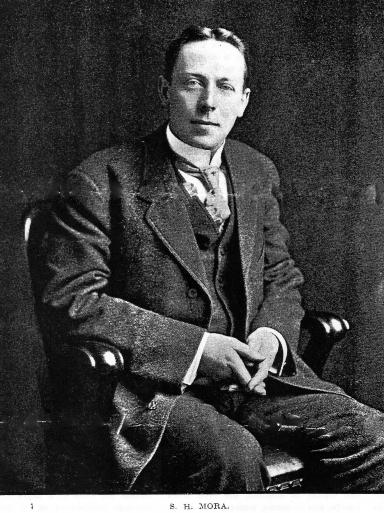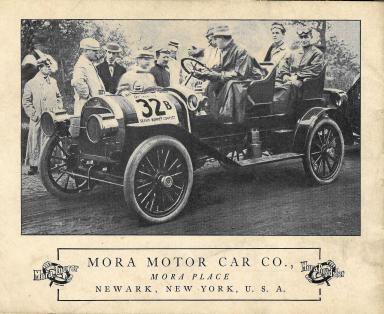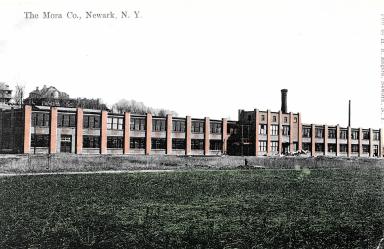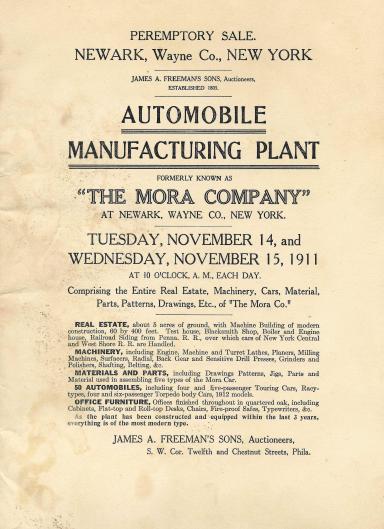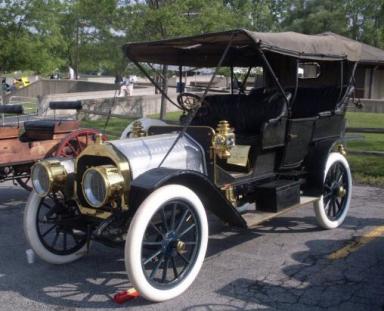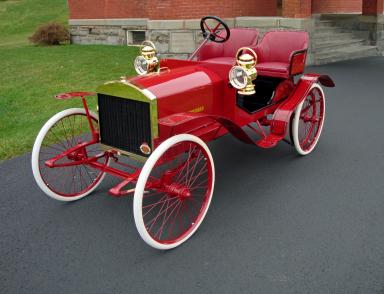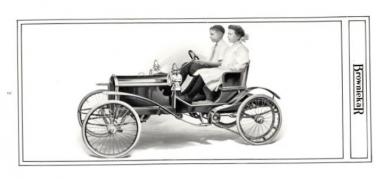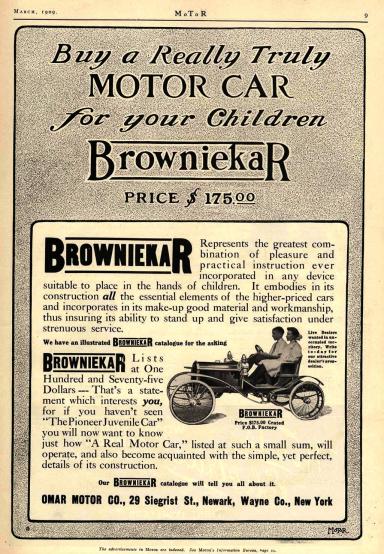If you find errors OR have additional information about this site, please send a message to contact@waynehistorians.org.
Historic Marker - Mora Motor Car Co./Hallagan Mfg. Co.
| Historic Site #: | 01-095 (Exists) Type: B2,H2 | Town: | Arcadia | ||
| Site Name: | Historic Marker - Mora Motor Car Co./Hallagan Mfg. Co. | GPS Coordinates: | 43.040798, -77.086153 | ||
| Address: | 500 Hoffman Street Newark NY | ||||
| Description: | |||||
| MORA MOTORCAR EST. 1906 BY SAMUEL H MORA AUTOMOBILES MANUFACTURED ON THIS SITE 1908-1911 HALLAGAN FINE FURNITURE LOCATED HERE SINCE 1913. | |||||
| Historic narrative: | |||||
Newark, the Detroit of Wayne County In the first decade of the 1900’s, many start-up companies were being formed to capitalize on the growing interest in automobiles. Like many forward-thinking businessmen, Samuel Mora, the Vice-president of Sales for the Eastman Kodak Company was interested in the idea of manufacturing a high-grade motor car. Mr. Mora responded to an advertisement in Rochester newspapers placed by a group of Newark businessmen seeking an occupant for a vacant factory in the village. After negotiations, Mora decided Newark would be the location for his factory. In March of 1906, The Mora Motor Car Company was incorporated. By August, nearly 70 workers were employed, producing four cars per week. Two different models were built: a 2-passenger roadster, and a 5-passenger tourer. Each model was powered by a 4-cylinder, 24 horsepower engine built in-house by Mora. Each car was tested on the streets of Newark before it was sold. Automobiles were not highly regarded at that time by everyone, and many Newark residents complained about the cars being tested at a high rate of speed on their streets. Mora ads were placed in all of the automobile trade journals of the time, and cars were displayed at automobile shows held in all major American cities. Orders came pouring in. Given the size limitations of the old factory, production could not keep up with the increased demand. Stock was sold to increase capital, and plans were made to build a new, larger factory. Land was purchased on Hoffman Street in Newark, and construction of the new factory was started that summer. Success continued. A way for manufacturers to show the reliability of their cars was to enter “Sealed Bonnet Contests” (what we call the “hood” today, was originally called the “bonnet”). Cars entered in these events would have their bonnets closed and sealed, preventing them from being opened. Travelling over a specified course, times in excess of allowed parameters, and any repairs made, would cost points. In 1907, Mora entered 3 cars in such a contest in New York City, covering 600 miles. Each car finished with a perfect score. From there one was driven to contests in Chicago, Atlantic City, Philadelphia, Pittsburgh, Cleveland, and then back to Newark. In total, 8,044 miles were driven, all with the original New York City seals still intact, quite a significant feat for an early car. From this success, Mora adopted the slogan “The World’s Sealed Bonnet Hero”, which became their advertising slogan until the company closed. A new line of cars was introduced for the 1908 model year including re-designed 4-cylinder models and 2 new 6-cylinder offerings. The new light six came in a sporty model called the Racytype, priced at $3,500 and a 5-passenger model called the Tourer, priced at $3,600. The new factory was needed to produce these new models, and construction was behind schedule. By May, the building was finally ready to be occupied. The delay caused production to be lower than expected, the financial panic of 1908, significant advertising costs, and the high price of the new cars caused the Mora Company to begin to have financial trouble. 1908 also saw the introduction of the Browniekar, a small car built for children, priced at $175. Yes, a car built for children at a time when most Americans could not afford a full-sized car, the company built a car for children. It was built at the old factory by a subsidiary of the Mora Company, called the Omar Motor Car Company, Omar being an anagram of Mora. These cars were only built for about 1 year. Mora continued producing cars through 1908 and into 1909, but demand was declining. In an attempt to enter the lower-priced market, Mora introduced a smaller, 2-passenger car priced at $1,050. It sold in low numbers and couldn’t save the company. In July 1910 the company declared bankruptcy. The factory, machinery, parts, unsold and unfinished cars were sold at auction in November 1911. The factory was purchased by the Canastota Couch Company, which later became Hallagan Furniture, who still makes furniture there today. Samuel Mora moved to Cleveland, Ohio where he attempted to build trucks, but that venture also failed. Total production numbers for Mora and Browniekar cars are not known, but it is reasonable to think that about 1,000 Moras and 100 Browniekars were built. Today, 2 Moras and 3 Browniekars are known to exist. | |||||



